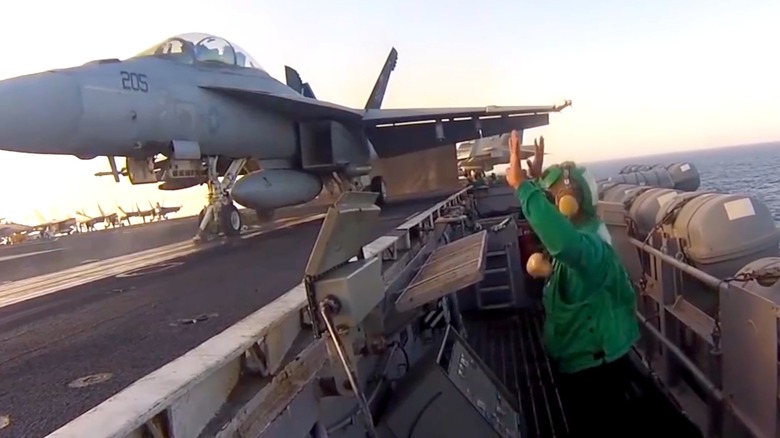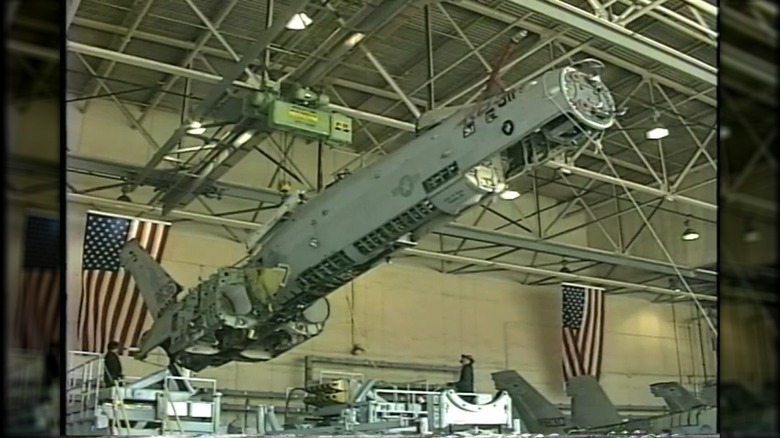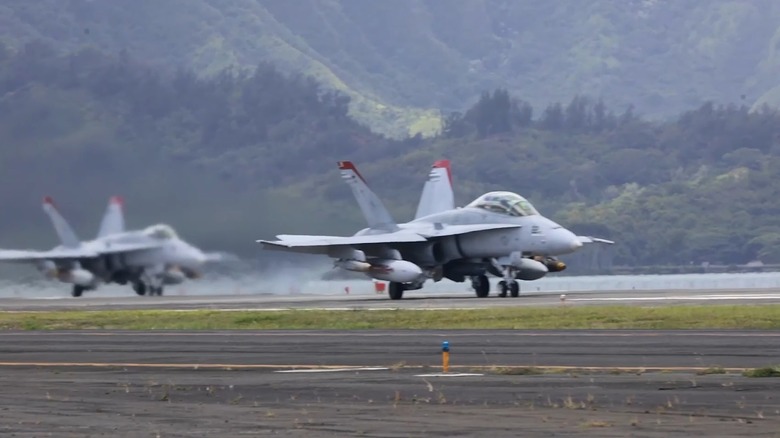The F/A-18 Fighter Jet Had A Serious Design Flaw - Here's What Fixed It
A fighter jet can pull many Gs, which is why back in the mid-80s, there was such a sudden concern shortly after the Navy first deployed the Hornet. It was discovered during testing that there was a significant defect in the F/A-18 Hornet's aluminum structure that, if left untreated, the jet's wings could separate from the aircraft.
While no fighter jet is capable of lasting forever, there are projections as to how many flight hours these machines can handle. In the case of the original F/A-18, it was supposed to be 6,000 flight hours. However, in testing specific stress points, it was found that the aircraft could have only survived as few as 2,000 flight hours, only a third of what was intended.
It was determined that including extra amounts of metal during manufacturing could remedy the problem. However, extending the Hornet's service life would require a far more complex fix. The center barrel, the area where the landing gear and wings attach to the fuselage, needed to be replaced, or the legacy F/A-18 wouldn't be able to continue flying.
A center barrel replacement was no easy feat
By the early '90s, it wasn't just aerial maneuvers taking a toll on the structure of the legacy Hornet, but also the regular and often jarring landings on aircraft carriers that threatened to ground several jets. In fact, the ocean environment of carriers can be so unpredictable that there have been multiple fighter jets that have fallen off aircraft carriers in 2025.
The Fleet Readiness Center, which includes multiple locations, is responsible for keeping the U.S. Navy's aircraft in peak working order. According to the Navy, these centers handle around 1,000 aircraft repairs, including engine repairs and a staggering number of component replacements each year.
Replacing the Hornet's center barrel was no ordinary task. It required thousands of hours of labor to remedy. Those responsible for the modifications needed to secure the aircraft to additional support frames, carefully split it in half, and then remove countless fasteners just to access the stressed component. Then, they replaced it with a new center barrel and increased the diameter of each (around 20,000) fastener hole (as the new fasteners were larger).
These fixes were expensive, so why not just commission a new aircraft?
A center barrel replacement on a legacy F/A-18 fighter sometimes took up to three years to complete, which included extensive testing to ensure the aircraft was operationally ready. On top of the time investment, it also cost the Navy around $3 million per jet. This sum is certainly a staggering figure for repairs; however, it was minimal when compared to the cost of a new jet.
Originally, the first Hornet aircraft, circa 1976, were reportedly just under $14 million apiece, according to the U.S. Government Accountability Office. Of course, by the time the Fleet Readiness Center was conducting center barrel replacement fixes in 1991, the cost would have been even greater. Factors like inflation and more advanced technology being incorporated into each jet over the years would have added to its price.
So, the Navy decided to implement the fix, resulting in a fraction of the cost of a new jet, and continued extending the service life of the Hornet for more than three decades. It was only just in 2023 that the Fleet Readiness Center completed its final legacy aircraft center barrel replacement.


